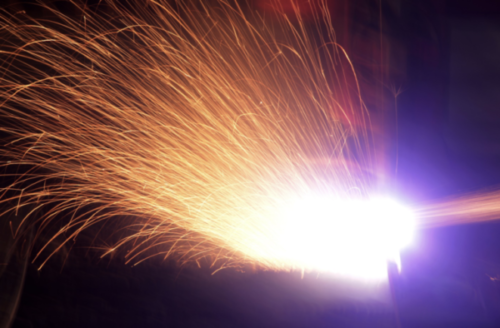
Brought to you by Superior Glove
Understanding the fundamentals of arc flash-resistant hand protection

August 3, 2023 in Features
By Superior Glove, leading safety glove innovator

An arc flash occurs when there is a sudden release of electrical energy between two conductors, causing an explosion. It is a serious hazard in industries such as electrical utilities, construction, oil & gas, and manufacturing, where workers are working around high voltage switches and grounding gear, panel boards, switchboards, and transformers. Arc flash related injuries can be extremely dangerous and lead to severe burns, eye damage, hearing loss, and can even be fatal. This is why, it is essential for workers to have head-to-toe protection including hand protection, arc flash- and flame-resistant clothing, safety helmets, and face shields.
Arc flash-resistant gloves offer incidental protection in case there is an arc flash. In this article, we will discuss the key materials used in manufacturing arc flash-resistant gloves.
Materials used in arc flash-resistant gloves
The most common material used for protection against arc flash hazards is leather, due to its inherent fire resistance and durability. However, other materials are also used to manufacture arc flash-resistant gloves.
Leather
Leather is inherently fire resistant and a frontrunner to protect against arc flash. Its solid outer shell provides a natural barrier that makes it hard for flames or heat to penetrate.
Wool
Wool is an inherently fire-resistant natural fiber that forms an insulating layer to prevent flames from spreading further. It is not flammable and has a very high ignition temperature, preventing it from easily catching fire. If it does catch fire the wool will burn slowly, and the fibers self-extinguish. For arc flash gloves, wool is often used as an inner liner in leather and knit gloves for extra protection and comfort.
Besides being inherently fire-resistant, wool is commonly used as an insulating liner that helps keep hands warm while working in cold temperatures.
Cotton
Cotton is a natural fiber that provides natural heat resistance. However, cotton must be treated with chemicals that resist fire in order to be fire resistant. Like wool, cotton is most commonly used as a liner in leather and knit gloves for extra protection and comfort against arc flash hazards.
Aramids
Both major aramids—para-aramid and meta-aramid—are synthetic fibers that are inherently fire resistant due to their chemical structure. For arc flash gloves, aramids are often selected because of their superior natural mechanical protection, particularly para-aramids, since they offer protection against other hazards like cut and abrasion. Aramids are also frequently paired with leather to improve its natural flame and heat resistance.
Modacrylic
Modacrylic is a synthetic fiber that is inherently fire resistant. But, unlike aramids, it lacks any type of mechanical protection. This is why modacrylic is often blended with other materials (natural or synthetic) to improve mechanical protection and comfort.
Neoprene
Neoprene is a synthetic rubber traditionally used for manufacturing chemical gloves and also serve as palm coatings for knit gloves. It is primarily used for its natural high fire resistance against arc flash hazards.
Learn More
To learn more, we’ve created a more in-depth guide that expands on the ins-and-outs of arc flash-resistant gloves, including a better understanding of the underlying forces that cause arc flash related injuries, materials not to use when working around arc flash hazards, and safety standards and tests that determine the level or arc flash protection required to prevent serious injuries. Click here to read more.